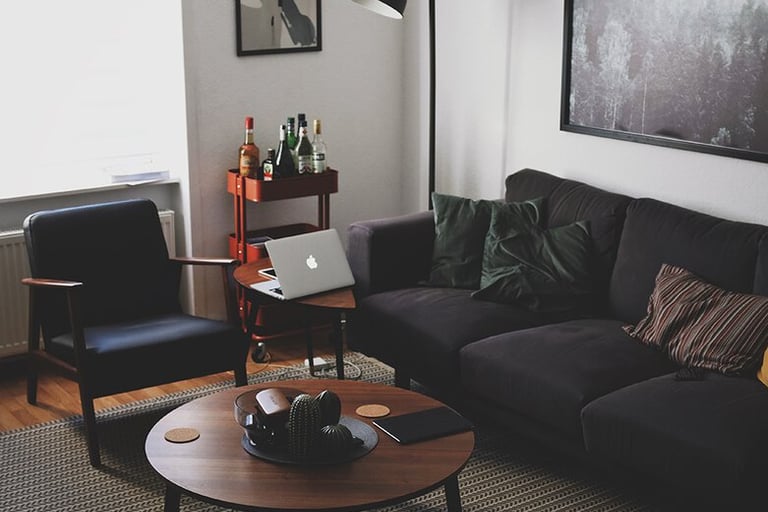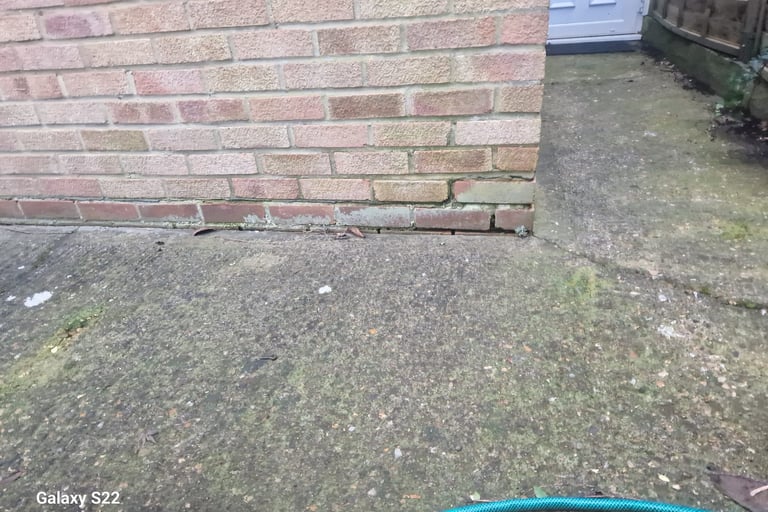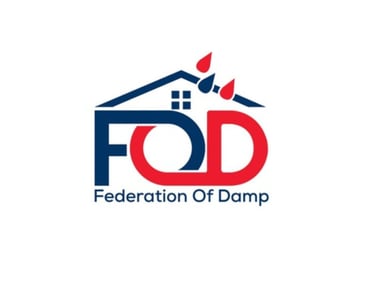Different Types of Damp
Rising Damp
Rising dampness is a common, naturally occurring phenomenon caused by moisture rising via capillary action into the walls. Most masonry building materials can be subject to rising dampness to varying degrees and, without suitable protection, your property can suffer from the problem. Effects can include unsightly mineral salts, moisture staining to decorative surfaces and, in severe cases, the breakdown of wall plaster due to salt contamination.
Rising damp can also occur if the ground level outside of the property is higher than the damp proof course, this process is called bridging.
One of the problems associated with rising damp is that salts are concentrated and water absorbed from the air means that it can cause contaminated finishes to appear damp. When decorative finishes are applied then this would deteriorate further over time.
Another issue is that if rising damp affects the timbers of the building then one of the outcomes could be dry rot. Dry rot can cause severe structural problems to the building’s integrity if not discovered and treated quickly enough.


Penetrating Damp
Penetrating damp is the result of water infiltration through a wall and into the property. This occurs either due to water entering through a defect in the building or when external brick or stone walls have degraded to the point where they become porous and allow water ingress to pass through the external wall into the property.
There are a number of sources that can cause penetrating damp including:
Different types of building defects - including overflowing gutters, leaking or blocked pipes, damaged pointing and flashing, dilapidated or poorly installed windows, missing roof tiles, and incorrect paint coatings.
Porous walls – ageing bricks lose their ability to keep out rain penetration while cracks in external render allow problematic water ingress.
Spalled bricks and degraded mortar – damage to brickwork can allow water to penetrate into your home.
Basements with high underground water pressure.
Exterior moisture directly against a wall. E.g when soil presses against a wall that is cracked or made from porous materials, groundwater can seep through and saturate the wall.
Penetrating damp can be damaging to a property even if it does not penetrate all the way through a wall. It can lead to other damp related issues such as wet rot and dry rot, damp plasterwork, increased heat loss, damp musty smells, frost damage to masonry and unsightly water damage on both the outside and inside of a property.


Condensation
Condensation is caused when water vapour comes in contact with cold surfaces and condenses to form dampness or water droplets. Air can contain varying amounts of water vapour; the amount of water vapour contained in the air is related to air temperature, hence the term "relative humidity"; warm air can hold more water vapour than cold air. When warm air comes into contact with a colder surface, it cools down and can't retain the same amount of water vapour. The excess water vapour is released and forms condensation. Water vapour is invisible in the air and is formed when you carry out normal daily activities in the home such as boiling kettles, cooking, drying clothes, pets, the use of non-flued heating and even breathing. It can also occur in a new home because building materials, such as mortars and plaster contain a large amount of water.
The air within the living environment becomes saturated with water vapour. When these conditions prevail the air inside the property becomes saturated.
PRODUCE LESS MOISTURE Leave trickle vents (slotted vents in the window or window frames) open when rooms are occupied even in the winter when your heating is on.
The kitchen and bathroom extractor fans should be used when cooking and showering and left on for a period of time afterwards. Ideally, a fan with a built-in humidistat should be fitted to these areas.
When using the kitchen or bathroom, try and keep the door closed when possible so that moist or stale air is contained within the room for the extractor fan to remove.
While cooking, try and cover all pots and pans and avoid leaving anything on the boil for too long to help reduce the steam created.
Furniture should be kept clear of the external walls to allow better air circulation. If unable to keep well clear, keep at least a small gap between the walls and furniture, particularly against "cold walls" and allow ventilation of any cupboards to keep air flow moving.
Washing should not be dried indoors. If this is not possible, avoid drying laundry on a clothes airer or radiator. If you need to dry clothes indoors, open the window and close the door of the room where the clothes are drying, so that moisture can escape outside rather than circulate around your home.
If you use a vented tumble dryer, make sure it is properly vented to a open window or door or through an outside wall.
As it is cold air that causes warm air to release moisture, keep heating levels within the property at a constant and moderate temperature.
When condensation appears wipe away as soon as possible.
Visual evidence indicates a problem of condensation caused by cold bridging from (solid lintel, uninsulated eaves, cavity detail, solid wall)
Condensation can be most apparent on cold surfaces e.g., windows, external walls and particularly in areas of poor airflow i.e., corners of rooms, behind furniture, in cupboards etc. Like other sources of moisture, condensation is likely to increase heat loss from the building and can be contributable factor of fungal decay.
Mould growths associated with condensation can become damaging not only to decorations and furnishings but also to the health of occupants.






